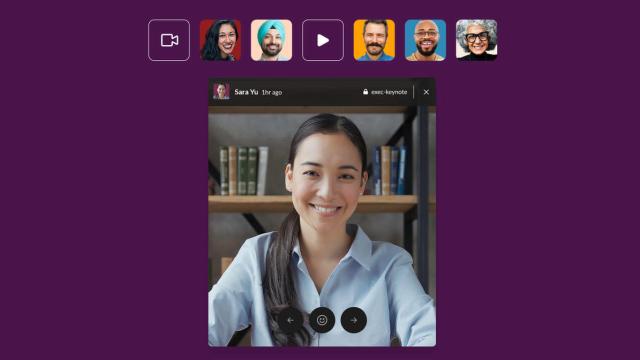Slack is a company in trouble. For some reason, the workplace messaging app — one that’s cursed not only with occasional outages, but a mind-numbing layout and features explicitly designed to snitch on all of our DM’s — has faced nothing but slumping stocks since its debut on the public market last year. But rather than addressing those issues or any of the other gripes people subjected to Slack regularly report, the company’s plan towards a more profitable 2021 seems to mostly revolve around looking less like Slack, and more like… something else.
The specifics of that “something else” are still TBA, but Slack CEO Stewart Butterfield hinted at the company’s plans for the near future in a recent round of interviews with The Verge. They sound it sounds like an ungodly chimera that’s part Slack, but also part Instagram, Discord, Twitter, and… Blackberry, oddly enough. The additions, in his words, seem to be all centered around the idea of making Slack feel like less of a platform you’d associate with a stuffy, buttoned up boardroom, and more with the type of office that’s filled with chill bros that, while still buttoned up, are buttoned up in a cool way. Needless to say, I hate all of it.
The first feature being prototyped can best be described as Slack’s answer to Instagram stories — which, as you might recall, was originally itself a ripoff of Snapchat’s beloved feature of the same name. But instead of being a way for coworkers to share videos of their #wfh setups, the idea is that managers will use these short clips as a way to recreate the stand-up meetings that some of us used to have in the Before Times.
In a similar vein, Slack’s also potentially incorporating Discord-esque audio chat rooms that officemates can hop in and out of, rather than taking the time to set up a formal call. And like Discord, the audio stream is always running, which makes the feature sound — at least to me — less like a place for spontaneous conversations, and more of a place for meetings that literally never end.

I’m sure other folks from other, chill offices might get some use out of these features, but my own unease is less about the features and more about the way we perceive what Slack’s ultimate purpose is. There’s about 12 million people on this platform every day, and many of them are stuck using it from their home until god knows when. And when you work from home, the boundaries between what’s work and what’s personal become a bit fuzzy by default, which can lead some people (including myself) to feel like they are, always on the clock. Right now, I think it’s safe to say we need more boundaries between our work-life and social-life, not less.
Slack’s pivot to being less about work and more about chilling with your homies (that you just so happen to work with) isn’t going to make defining those boundaries any easier. Nor will turning Slack into a bonafide social network, which seems to be another pivot the company has planned, according to Butterfield. Starting in early 2021, Slack users will be able to have conversations with any other Slack user at any other company, with the help of “private links.” In this early imagining of the feature, Slack users can swap these links with, say, clients at other organisations, or share them on their (other) social media profiles.
Like the rest of the features we’re talking about here, this also sounds a bit… familiar. While Butterfield compared it to BlackBerry’s messaging service, it’s worth nothing that fellow WFH-staple Zoom built its product off of this link-swapping concept, which blew up in the company’s face in pretty horrifying ways — particularly when teens got involved. From Butterfield’s description, it doesn’t sound like the company thinks Slack Bombings will be a problem he’ll need to contend with. Or maybe those fears are being drowned out by the quiet dread of realising some investors are seeing more of a future with Zoom, and shifting their spend in turn.
The antitrust complaint that Slack lobbed against Microsoft this past summer pretty much confirmed that the biggest thorn in the company’s side right now is Microsoft Teams, and like just about everything Microsoft has to offer, Teams is a no-nonsense product. Functional, yes, but objectively boring to look at, the kind of thing that evokes a cubicles, name badges, and the colour beige, rather than the open-plan office vibe Slack seems to be after.
But as anyone who’s ever worked in an open-plan office will tell you, they’re objectively bad. They’re a way for corporations to save on the cost of space and interior design while hiding behind the guise of making an environment that’s more “collaborative” and “friendly” In fact, all conceivable evidence points to these setups leading to less productivity, less privacy, and less actual collaboration as a result. But cut costs are cut costs, and these offices will keep getting built behind the specter of “collaboration,” ostensibly because it sounds friendly, just like Slack’s planned updates do.
Just like the open plan office, these upcoming features are bound to exacerbate the issues that Slack’s most vocal critics have been saying for years. They’ll make the platform more distracting, more noisy, and more about being on Slack than actually working.
